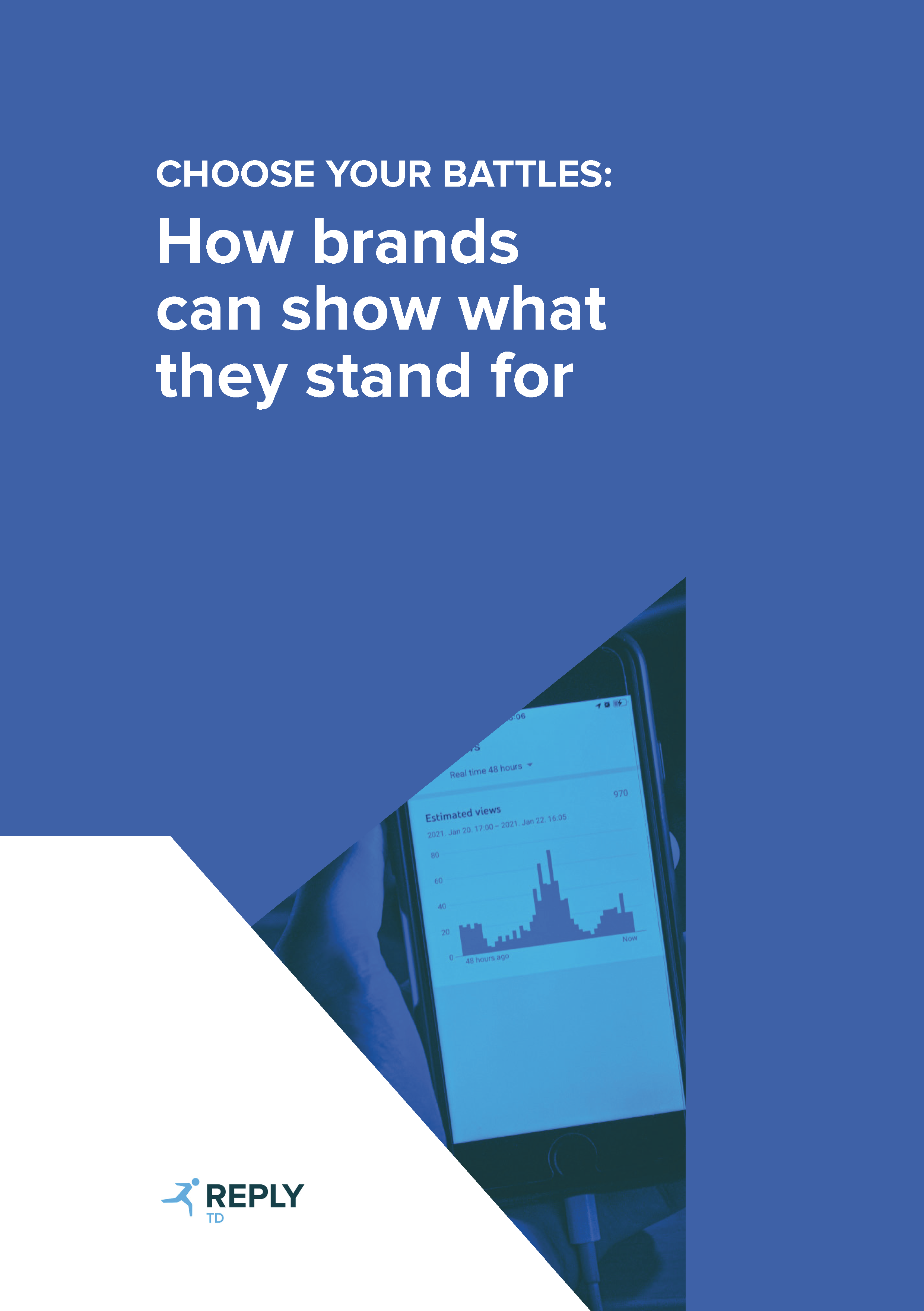
More and more consumers expect brands to have a clear stance on social and political issues. Yet only few brands are truly effective in communicating stance. Many brands have ended up facing accusations of greenwashing, pinkwashing or wokewashing after launching an expensive purpose marketing campaign.
What should brands focus on to ensure their communication of attitude doesn’t fall flat or even lead to shitstorms? This white paper provides a game plan based on genuine data-driven insights.
Discussions on the ubiquitous social media have a significant impact on brand image and brand value. They also often put companies under pressure to take a stance on current social, political and cultural issues.
According to surveys, about 70% of consumers think it’s important for brands to show attitude. At the same time, the number of daily advertising contacts has been rising sharply for decades. This makes it increasingly difficult for brands to make their communication activities visible enough at all. On the other hand, brands on social media are also quickly accused of “greenwashing,” “pinkwashing,” and “wokewashing” if the communicated attitude of the brand does not quite match the actual brand perception on the part of consumers.

Wirtschaftswoche, https://www.wiwo.de/unternehmen/dienstleister/werbesprech-nie-war-die-botschaft-so-wertlos-wie-heute/23163046.html
For brand managers, the crucial question is therefore often not whether the brand should take a stand, but how to make the corresponding purpose marketing activities visible in the first place. In our experience, the best answers to that can be found in innovative social and expert listening approaches combined with classic marketing theory.
In this white paper, we introduce a generalizable game plan on this basis, which can serve as orientation for brands in communicating attitude. It is based on a joint project between TD Reply and the Marketing Department of the Luigi Bocconi University of Economics and Business Administration. Under the guidance of Prof. Dr. Verena Schoenmueller and TD Reply experts, Bocconi students in the Brand Management course have contributed significantly to the collection of the data on which the findings presented in this white paper are based.
BACK TO ALL ARTICLES
